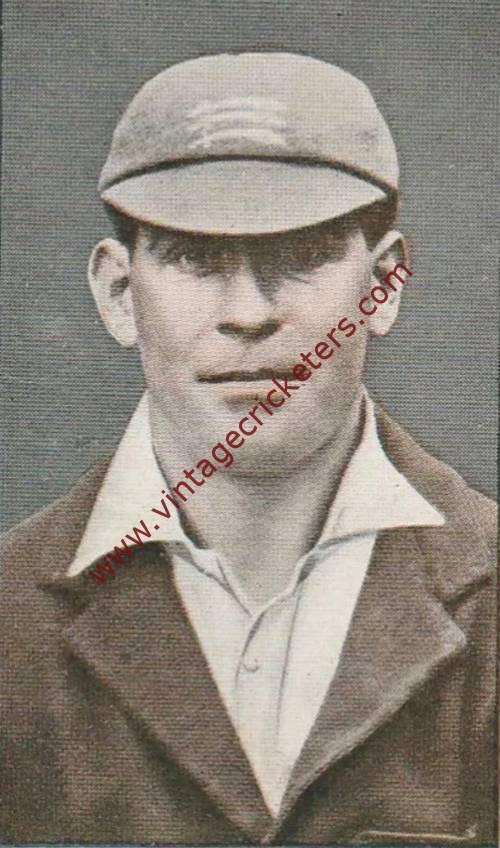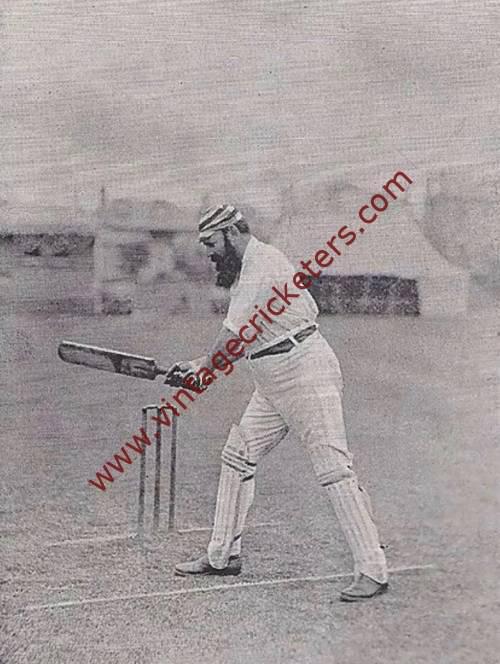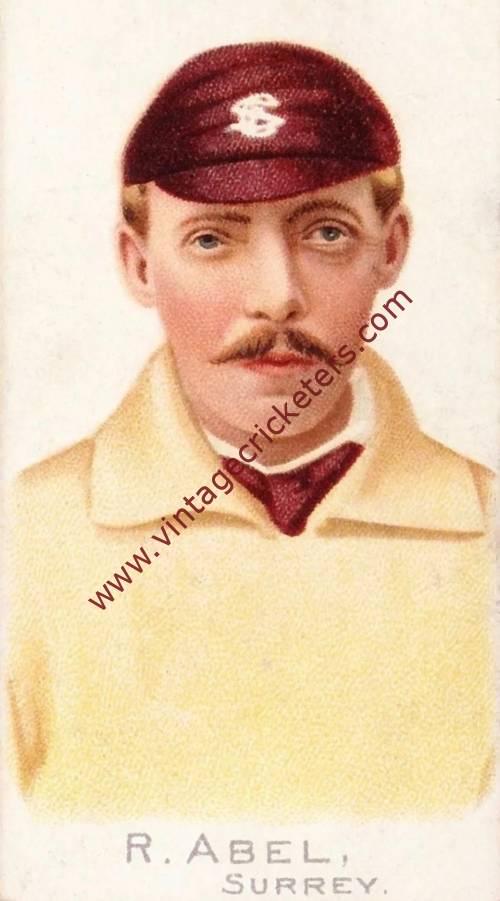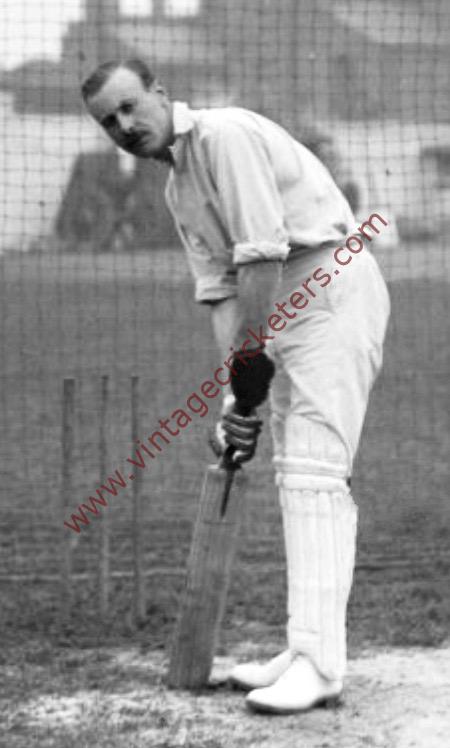Please choose your photo size from the drop down menu below.
If you wish your photo to be framed please select Yes.
Note: 16″x 20″not available in a frame.
Images can also be added to accessories. To order please follow these links
£8.95 – £49.95
Please choose your photo size from the drop down menu below.
If you wish your photo to be framed please select Yes.
Note: 16″x 20″not available in a frame.
Images can also be added to accessories. To order please follow these links
The maximum number of views of this element is reached.
Please contact the webmaster to enable unlimited views.
Paddington, London born slow left-arm orthodox bowler Jack Young relied on accuracy and a flat delivery rather than flight. He was on the staff at Middlesex for much of the 1930’s, making his debut for the County in 1933, but had little success before the War and only came to the fore after Second World War, when he took 8-71 against the RAF and 6-33 against the Army while guesting for Glamorgan in 1945. Back at Lord’s in 1946 he immediately became an integral part of a powerful Middlesex side. Displaying what Wisden called `wholehearted endeavour’, Young took 122 wickets at 16.68 each in 1946, his first full season, and a return of 8-31 against Yorkshire (following 4-41 in the first innings) won him his County cap. He showed his liking for the northern county’s batsmen again later that season with 8-33 for M.C.C. against Yorkshire (83 all out) in the Scarborough Festival. A hat-trick came his way at Northampton, but this achievement was dwarfed by Bill Edrich’s all-round efforts: he followed up an innings of 222 not out with 7-69 in Northants’ first innings.
His improvement, at 33, caused much comment. Edrich wrote, in Cricket Heritage: `Young had last played for the county in 1936, and he was the first left-hand bowler Middlesex had played regularly since 1914. The ball comes fairly low from his hand, and dips disconcertingly in the air, causing even the best batsmen to mistime their strokes. The wet summer, I think, helped him, but what made most difference was the hours he spent slaving away in the nets polishing up his attack.’
In 1947, the left-armer took 7-46 against Glamorgan, who were beaten inside two days, returned 6-41 and 5-36 against Northants, and took 9-82 in the match against Gloucestershire at Cheltenham, where Middlesex won by 68 runs despite Tom Goddard taking 15 wickets for the home side. Young took 159 wickets at 17.38 apiece, topping Middlesex’s averages (a position he was not to relinquish until 1955) as Middlesex, led by the batting of Denis Compton, Bill Edrich and Jack Robertson, won the County Championship, Young picked up 5-36 against Northants as Middlesex wrapped up the title at Lord’s on Aug 28th. He repeated the feat two years later when the Championship was shared with Yorkshire. He also took more than 150 wickets in 1951 and 1952, so that, when he retired from injury after just three matches in the 1956 season, he had taken more than 1,300 wickets in ten seasons at an average of less than 20 runs per wicket.
Young played Test cricket for England eight times between July 1947, when he made his England debut against South Africa at Headingley, and 1949, but took only 17 wickets in those games. Though his accuracy made him economical, and he bowled eleven consecutive maiden overs on his home Test debut at Trent Bridge against the 1948 Australians Don Bradman and Lindsay Hassett, then a world-record return, he appeared to lack the penetration to trouble the best batsmen. He was also perhaps unlucky in selection policies: in 1948, he played the first, third and fifth Tests and was omitted from the chosen 12 at Headingley, where the pitch for the fourth Test might have suited him better.
Young’s final Test caps came against New Zealand in 1949. Ironically, his best Test bowling figures came in his last match: 3 for 65 at Lord’s, where he brought Martin Donnelly’s epic 206 to an end and also dismissed Mooney and Cave. He finished with 17 wickets at 44.52 in his eight Tests.
After a relatively quiet 1950 season (112 wickets at 22.24) Young was more incisive in 1951, taking 157 wickets at 18.95 average and snapping up another hat-trick, this time at Lancashire’s expense. At the end of the season he recorded his best-ever bowling figures, with 9-55 (the other man was run out) on a turning pitch at Hastings for an England XI against a Commonwealth XI. Among Young’s victims were Frank Worrell, Bruce Dooland and Derek Shackleton, and spinners George Tribe and Sonny Ramadhin, who took advantage of the helpful pitch to take the Commonwealth team to victory despite Young’s efforts. Ramadhin took 11 wickets (for 61) and Tribe the other nine.
The following season, 1952, was Jack Young’s benefit year. Although he injured both knees in only the second match, he appeared in every game and ended with his best seasonal tally of wickets: 163 at 19.88. His benefit amounted to £4,946.
Young showed his liking for Canterbury’s St Lawrence ground with 6 for 55 and 8 for 60 against Kent in 1953, during which he took 122 wickets (21.22). The early-season match against Northants at Peterborough was an exciting one: chasing 227, the home side were 225 for 7, then lost a wicket. After one run was scored, Young popped up to take the last two wickets with successive balls to force the tie. After two further seasons, in both of which he took 94 wickets, Young dropped out of county cricket after only three matches in 1956. He was then 43.
His tally of 1,182 wickets for Middlesex is bettered by only Fred Titmus and Jim Sims since the Second World War and by J.T. and J.W. Hearne before it. In 341 first class matches he only ever made one half century, a score of 62 against Yorkshire at Bramall Lane in 1949 where he shared in an unlikely ninth wicket stand of 98 with J.J. Warr (47), averaging 8.93 with the bat. With the ball he took 1,361 wickets at 19.68 apiece, with a best return of 9-55. He took 10 wickets in a match on 17 occasions and bowled 82 five wicket innings. He also took 150 catches in the first class game.
The cricket writer, Colin Bateman, commented, “the son of a music hall comic, Jack Young was a theatrical performer and extremely popular with spectators”.
Vintage Cricketers was founded in July 2019. There may be more photographs of this cricketer in the Vintage Cricketers library, which are due to be loaded in due course. In the meantime, please send a message to us using the contact form at the bottom left of this page and we can arrange to prepare and publish all images of this cricketer if you have a particular interest in him.
| Weight | N/A |
|---|




